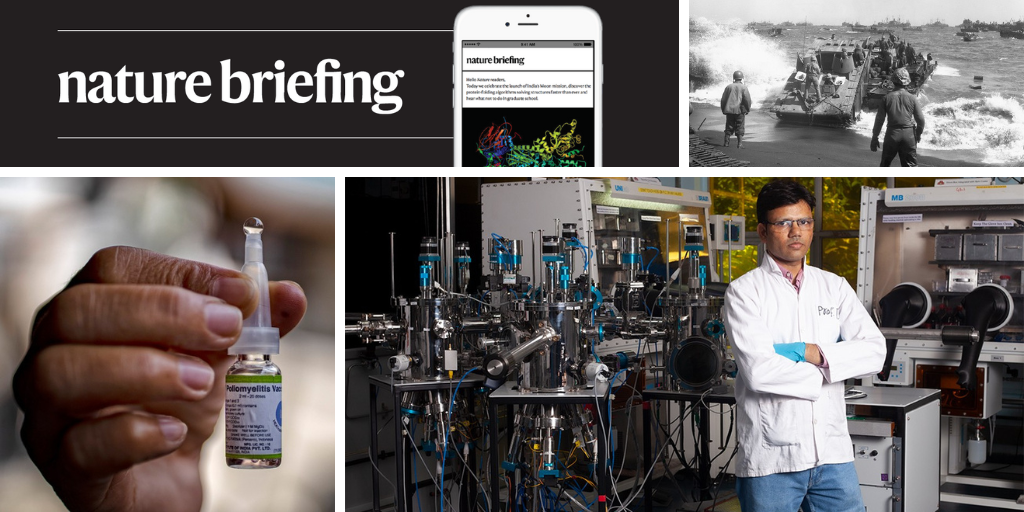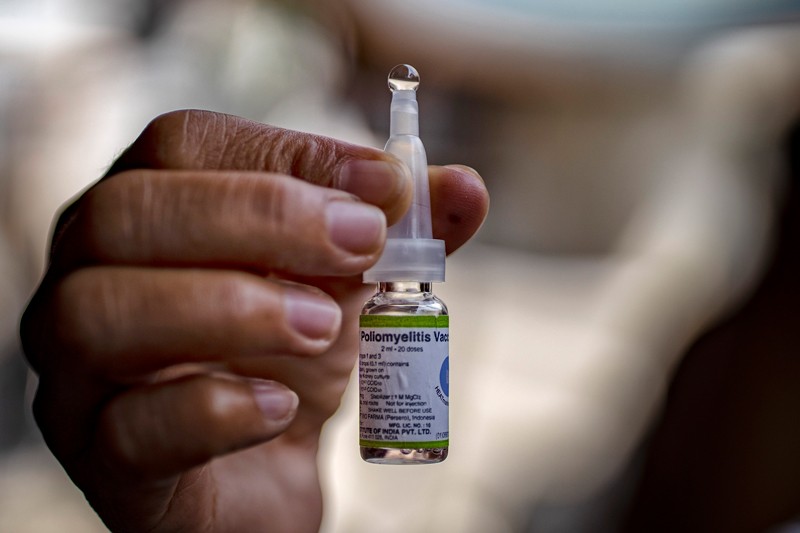Hello Nature readers, would you like to get this Briefing in your inbox free every day? Sign up here
Scientists are racing to understand how polio might be spreading in New York state, London and Jerusalem, all of which have found poliovirus in wastewater samples this year. Thanks to high vaccination rates, so far only two cases of polio-related paralysis have been reported, in Jerusalem in February and New York in June. All three areas are boosting immunization efforts, including an ambitious effort to vaccinate all one-to-nine-year-olds in London. The events are yet another reminder of the need for a global understanding of public health, say specialists. “No country in the world is immune to the effects of polio,” says global-health researcher Zulfiqar Bhutta. “It’s all interconnected.”
China has issued a national drought alert in the face of a record-breaking heatwave, which has lasted two months. As many as 66 rivers across 34 counties in the southwestern region of Chongqing have dried up, reports Reuters via state broadcaster CCTV. Drought has affected agriculture and caused power shortages in areas reliant on hydroelectric sources. Regional authorities have launched ‘cloud seeding’ efforts, which aim to stimulate rainfall by firing silver iodide rods into clouds. State forecasters predict that the heatwave could start to abate on 26 August, reports Reuters.
Reuters | 4 min read & CNN | 4 min read
Nepal has the world’s highest death rate from chronic lung disease. The rate — 182.5 per 100,000 population — is standardized by age, taking into account differences in the age distributions of different countries. “Although Nepal generates much of its electricity from clean hydroelectric sources, it suffers from high levels of air pollution from the burning of garbage and biomass and from road traffic,” says epidemiologist and study co-author Jay Kaufman. High death rates in poorer Asian countries “also speak to the limited access to medical interventions that might improve survival”, he says. In contrast, Japan has the lowest chronic lung-disease death rate, at 7.4 per 100,000 people.
Features & opinion
In Lethal Tides, author Catherine Musemeche highlights the little-known career of Mary Sears, the chief US naval oceanographer during the Second World War. Sears joined the service through a casual act of sexism — she was thought to be the only ‘non-essential’ member of her research institution, where she was not allowed to do field work at sea. Her team at the Navy, consisting mostly of members of the women’s branch of the Naval Reserve, did painstaking work at breakneck speed to support US operations in the Pacific.
Microsoft Excel and Google Sheets are powerful and widely used — but there’s a right way and a wrong way to use them, say data scientists. They offer six tips for using them correctly:
1. Keep your raw data raw: make your original spreadsheet a read-only document and work on copies, so that you can start over if necessary.
2. Avoid digital ‘bling’: do not encode data with colour or formatting, which can be easily lost and might be opaque to future users. Instead, create another column that can be sorted or filtered.
3. Be consistent: decide on one approach to things such as date formats and stick to it.
4. Document your work: designate a spreadsheet (or tab) as a ‘code book’ for details such as abbreviations, the calculations being performed and how data were collected.
5. Cross-check your data: build in simple cross-checks to ensure that calculations are functioning as they should, and consider data validation to check values as they are entered.
6. Think ahead: if possible, work out what you hope to do with your data before creating your spreadsheet in the first place.
Visualizations are essential to understanding rich genomic data — for example, in this year’s unveiling of the first complete human genome. But existing visualization tools can struggle to cope with new methods and data types. Now, a tool known as Gosling allows bioinformaticians to build apps that can display genomic information in a scalable and interactive way and to invent new visualizations.
Where I work
Photonics physicist Dinesh Kabra is working with the next generation of optoelectronic materials. “Optoelectronic materials turn light into electricity; some can also turn electricity into light,” he explains. These could lead to more efficient solar cells or displays with higher resolution. Behind him in this photo is a shiny ‘cluster tool’ that allows Kabra and his team to fabricate sensitive devices without exposing them to the ambient air. (Nature | 3 min read) (Prarthna Singh for Nature)
On Friday, Leif Penguinson was exploring the snowy scenery and sandy trails of the Oregon Badlands Wilderness. Did you find the penguin? When you’re ready, here’s the answer.
After a refreshing and accent-reinforcing holiday, I’m delighted to be back at the Briefing helm. Thank you to Emma Stoye and Anne Marie Conlon for keeping the ship firmly on course in my absence. We have lots of exciting news coming up for the Briefing this autumn, so do stay tuned. In the meantime, we’re always keen to hear your feedback — your e-mails are welcome at [email protected].
Thanks for reading,
Flora Graham, senior editor, Nature Briefing
With contributions by Emma Stoye







More News
Could bird flu in cows lead to a human outbreak? Slow response worries scientists
US halts funding to controversial virus-hunting group: what researchers think
How high-fat diets feed breast cancer